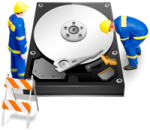
How to Recover Deleted Media Files on Windows 11/10 – Get Your Photos & Videos Back Fast
Learn how to recover media files on Windows 10 and 11—even after emptying the Recycle Bin or using Shift+Delete. This expert guide covers both free and paid solutions to get your photos and videos back quickly and safely.
Ultimate Guide to Recover PNG Files: Emergency Fixes for Deletion, Formatting & Loss (2025 AI Methods)
Images are among the most frequently lost files during data loss incidents. Knowing how to recover them—especially high‑quality PNG logos and design assets—is essential. This article explains the common causes of PNG file loss and walks you through effective recovery methods.
Top Ways to Recover Deleted JPEG Files on Windows & Mac
Learn how to recover deleted JPEG files on Windows and Mac with easy-to-follow steps, prevention tips, and essential tools. This concise guide ensures you get your important photos back quickly and securely, minimizing the risk of permanent loss.
Lost Your Nikon Photos? Quick Recovery Tips & Best Tools Revealed
Learn expert nikon photo recovery techniques tailored for users. Discover top software and best practices to quickly restore lost Nikon photos from SD cards after accidental deletion or formatting—no professional needed.
How to Recover NEF Files from Your SD Card: Top Methods That Work
Learn how to recover NEF files from your SD card with straightforward, proven methods. This guide explains what affects your chances, key NEF file details, and the best recovery tips for photographers.
Top 7 Ways to Fix ‘Drive is Not Accessible’ Errors — Quick & Reliable Solutions
Struggling with the ‘drive is not accessible’ error? This authoritative guide offers six proven solutions to restore access and recover your data, ensuring you avoid data loss.
How to Recover Data from a RAW SD Card: Step-by-Step Guide
Learn how to recover raw SD card data quickly and fix the card for future use. This authoritative guide explains causes, prevention, and practical recovery steps to help you securely recover raw sd card files without losing data.
Lost Files? Easy Ways to Unformat Your SD Card and Restore Data
Learn how to unformat your SD card and efficiently recover deleted files on your Windows PC. This step-by-step guide offers proven solutions for users to restore lost data after accidental SD card formatting.
How to Recover Files Deleted by Avast Antivirus: Step-by-Step Guide
Accidentally lost files to Avast Antivirus? This easy-to-follow guide shows you how to recover documents, apps, and other essentials that were mistakenly flagged or deleted by Avast on your Windows PC. Whether they’re stuck in quarantine or permanently removed, we’ll walk you through safe recovery methods—step by step.
How to Recover Photos from Your Fujifilm Camera: Step-by-Step Guide
Learn how to recover photos from Fujifilm camera quickly and easily. Our expert guide covers every major Fujifilm model, popular file formats, and effective tips to restore lost photos—perfect for users.




